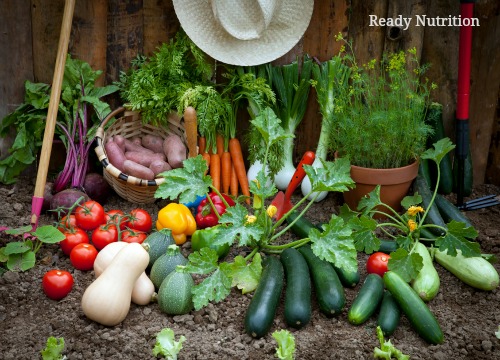
Why is Soil So Important?
Foremost, it is important to understand what soil actually is. According to the Soil Science Society of America, “Soil is not dirt. It is a complex mix of ingredients: minerals, air, water, and organic matter – countless organisms and the decaying remains of once living things. Soil is made of life. Soil makes life. And soil is life.” In order for plants to grow to their optimum capacity, they need nine different nutrients present in the soil. While most of these elements and nutrients are naturally found in soil, sometimes they can become depleted and need to be added to keep the soil healthy.
- Carbon – found in air and water
- Hydrogen – found in air and water
- Oxygen – found in air and water
- Nitrogen – blood meal, fish emulsion, manure
- Phosphorus – bone meal, rock phosphate, superphosphate
- Potassium – greensand, mutriate or sulfate of potash, seaweed, wood ashes
- Calcium – gypsum, limestone, oyster shells, slag
- Magnesium – dolomite, magnesium sulfate (Epsom salt)
- Sulfur – sulfur, superphosphate
Creating a no-till garden or utilizing the sheet mulching method can add these vital elements and nutrients back to the soil. This is a type of whole-system approach to gardening that helps feed the soil while vegetables and crops are growing. Another way to do so is by using an old-fashioned compost tea will help restore many of these essential nutrients, microorganisms and vital minerals naturally.
It should be stated that the elements listed above are not the only things that should be present in the soil. Microbes such as protozoa, fungi, algae and bacterias should also be present, as they affect soil structure and fertility
Compost Tea
Compost tea takes the beneficial bacteria and fungus present in compost and exponentially increases them through aeration and sugars. These bacteria and fungus are critical in root establishment – and the more bacteria you have in your soil, the better. In fact, if you diversify your bacterias, you will make a healthier soil and compost tea is one of the easiest ways to do this.
Benefits of Compost Tea
- Increases root development
- Suppresses plant diseases
- Creates a biodiverse soil food web
- Encourages plant growth and vitality
- Increases plant yield
The equipment you will need to make compost tea is as follows:
- 5-gallon bucket
- An aquarium pump large enough to run three bubblers or air stones
- Several feet of tubing
- A stick to stir the mixture
- Something to strain the tea, like an old pillowcase or nylon stocking
Tess’s Compost Tea
- 4 cups worm castings
- 4 ounces liquid seaweed
- 3 tablespoons unsulfered molasses (this creates a good ph balance)
- 3 tablespoons micorrhizal inoculant
- 1/4 cup azomite rock dust
- 1/4 cup rabbit manure (horse or cow manure works great too)
Note: I will also add some earthworm tea that I have from my earthworms and this adds even more nutrients to the brew!
- Add water to a 5-gallon plastic bucket. If you are using tap water, allow water to sit for 24 hours in order for chlorine and other chemicals to dissipate.
- Add liqui ingredients to water in 5-gallon bucket and stir until incorporated.
- In pillowcase or nylon stocking, add dry ingredients (rock dust, inoculant, manure, worm castings, etc.) and tie onto stick and add to bucket.
- Turn on aquarium pump with hose attached and oxygenate water for 18-24 hours. This will help the beneficial bacterias, minerals and sugars activate.
- Periodically check on brew. There should be a nice foam at the top.
- After 24 hours, turn off pump and remove dry ingredients (add to compost pile). Use compost tea as a foliar spray or root drench.
Note: Do not over-brew your compost tea. Twenty four hours is all it needs to get the protozoa and fungi kickstarted into reproduction.
You can use the tea as often as you wish. I used it once a month on my garden, or when I thought the plants needed a little extra TLC. In fact, you can also use compost tea to prevent plant shock by soaking new plants in compost tea before planting. It does double duty by giving the plants a good soaking prior to planting and adds beneficial microorganisms to the fragile root systems. As well, I have had a lot of success using it as a foliar spray and as a root drench and after a three month period, I was very impressed with the soil. It was fluffy, retained moisture and I noticed more beneficial insects coming around more. Another highlight of using compost tea was when harvest time came, the vegetables tasted sweeter than usual. I’m not sure if this was a result for the compost tea or just a fluke, but I felt that it had to be mentioned. As well, I had no issues with molds or diseases this year and believe it to be a result of the compost tea I used. This is by far the easiest way to get essential nutrients quickly into the soil, and I love that it can also be used as a foliar spray. As well, the initial investment of compost tea ingredients will provide for many uses; so I can make compost tea all year with the ingredients that I purchased in May!
Once again, my grandfather was right about giving the soil what it needs to thrive and proved it by the bountiful harvests he had year after year. I highly recommend using this in preparation for your upcoming gardens. I have had nothing but success with this natural fertilizer method and look forward to my next harvest.
This article was originally published at Ready Nutrition™ on October 27th, 2015






